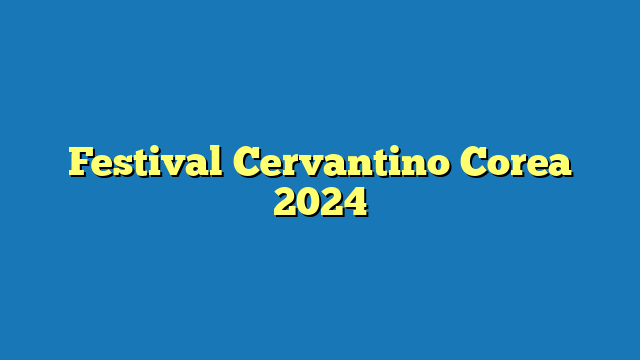Festival Cervantino Corea: Connecting Cultures through the Arts
Immerse yourself in a vibrant celebration of cultural exchange at the Festival Cervantino Corea, a renowned arts extravaganza that bridges the gap between Mexico and South Korea.
Origins and Mission
Conceived in 2005, the Festival Cervantino Corea draws inspiration from the prestigious Festival Internacional Cervantino, held annually in Guanajuato, Mexico. The festival’s mission is to foster understanding and appreciation between the two countries through the shared language of art.
Program and Highlights
The festival showcases a diverse repertoire of performances, exhibitions, and workshops covering various artistic disciplines:
- Music: From traditional mariachi bands to contemporary classical ensembles, the festival presents a wide range of musical genres.
- Dance: Contemporary dance companies, traditional dancers, and folklore groups showcase the rich dance heritage of both countries.
- Visual Arts: Exhibitions feature the works of renowned artists from Mexico and South Korea, exploring diverse themes and techniques.
- Theater: Performances range from experimental plays to musical theater, offering insights into society and the human condition.
- Workshops: Attendees have the opportunity to engage in interactive workshops and masterclasses led by experienced artists.
Venues and Locations
The festival takes place at various venues across Seoul, including:
- National Theater of Korea
- Seoul Arts Center
- Arko Arts Center
- Sejong Center for the Performing Arts
- Seoul Station Library
Impact and Significance
The Festival Cervantino Corea has become a significant cultural event in both countries, bringing together artists, audiences, and cultural enthusiasts:
- Cultural exchange: The festival provides a platform for Mexican and South Korean artists to share their work and engage with each other’s cultures.
- Audience enrichment: Attendees experience a diverse array of artistic expressions, broadening their horizons and fostering cultural understanding.
- Artistic collaboration: The festival has facilitated collaborations between Mexican and South Korean artists, resulting in unique and innovative artistic projects.
- Tourism and economy: The festival attracts a large number of tourists, contributing to the local economy and promoting cultural tourism.
Conclusion
The Festival Cervantino Corea is a testament to the power of the arts to bridge cultural divides and create meaningful connections. Through its diverse programming and commitment to cultural exchange, the festival continues to enrich the lives of audiences and foster a deeper understanding between Mexico and South Korea.



